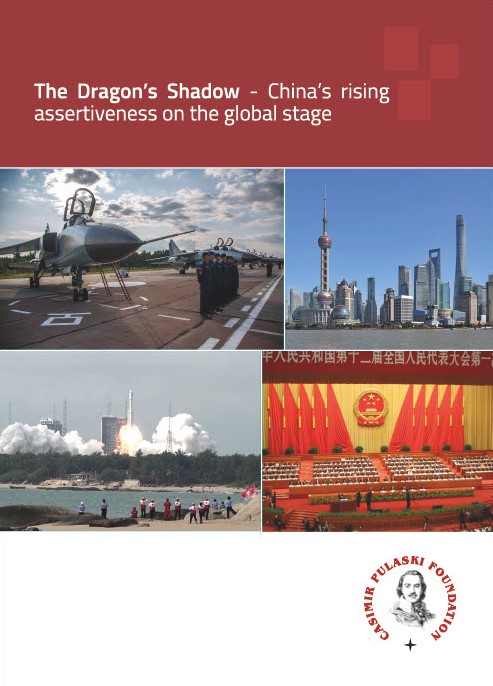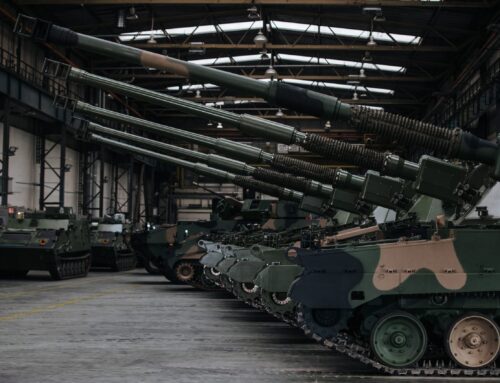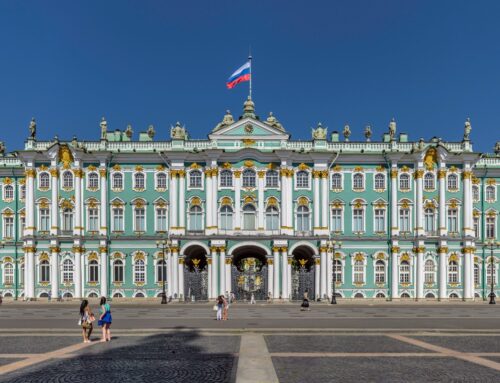Dragon’s Shadow – Okladka
Autor foto: Sherlock zhang and Public Domain

The Dragon’s Shadow – China’s rising assertiveness on the global stage
September 12, 2023
Author: Tomasz Smura, Dominik Mierzejewski, Przemysław Ciborek, Mateusz Chatys, Andrzej Kozłowski




Dragon’s Shadow – Okladka
Autor foto: Sherlock zhang and Public Domain
The Dragon’s Shadow – China’s rising assertiveness on the global stage
Author: Tomasz Smura, Dominik Mierzejewski, Przemysław Ciborek, Mateusz Chatys, Andrzej Kozłowski
Published: September 12, 2023
Introduction
The rise of China is one of the most significant phenomena in the international politics. China during 30 years was able to develop economically and politically to such an extent that can be capable to challenge the hegemony of the United States in the foreseeable future. Currently, the world is observing a competition between these two countries, which is becoming more and more tense.
China has been growing its potential in influencing foreign and security policy with Beijing becoming more and more assertive in the region and beyond leaving the famous Deng Xiaoping dictum that “hide ambitions and disguise your claws”. For many years China has also been increasing its presence in Europe and the CEE region through infrastructure investments and other projects aimed at achieving strategic aims of China.
The following report intends to trace the rising assertiveness of China on the global stage and present the main drivers behind it as well as the potential repercussion for the region and the world.
The report aims to:
- Identify the main area of China’s rising assertiveness
- Describe the drivers behind it
- Analyse the potential outcome of such policy
- Draft recommendations of this policy for Poland and the EU
The report consists of five chapters:
- China’s rising position on the global stage and in the international organisations
- The United States-China relations. Cold war 0?
- A new global technological hegemon? China’s quest for technological dominance
- The rising Chinese assertiveness in relations with neighbours on the South China Sea
- Chinese activity and propaganda in the CEE
The first chapters presents how the Chinese rising position is used to increase Beijing position in the international organisations. The role of China in the United Nations is analysed with the watershed moment of COVID-19. In addition the American actions to counter its influence are considered. The chapter also examines China’s use of multilateral formats such as the Shanghai Cooperation Organization, BRICS and other led multilateral formats.
In the second chapter, the author tries to answer the question if the relations between the United States and China could be presented as the second Cold War by analysing and comparing the policy of Donald Trump’s and Joe Biden’s administration. Furthermore, the area of strategic competition are indicated and analysed. Finally, the author tries to present the consequences of this rivalry for the CEE region.
The third part of the report attempts to answer if China is the new technological hegemon of the world. The author describes and analyses the main strategies of China in the technological dimension, and presents the strong and weak points of Chinese technological development. Furthermore, the main area of technological competition with the United States are presented as well as the Washington activities aimed at stopping China from achieving domination in the technological sphere.
One of the aspects of China’s rising assertiveness is its growing position in the region and rising tensions with the neighbours in the South China Sea. In the fourth chapter, the authors presents the main disputes in this region, the Chinese approach to the neighbours with the main aims of Beijing policy, the historic roots of Chinese expansion and legal and coercive actions of Beijing. In the last part of the chapter authors presents the United States and its allies reaction on the Chinese actions.
The domination in the infosphere has become crucial in the current networked world and has also been pursued by China. Therefore the last chapter is devoted to Chinese propaganda in Central Eastern Europe with the description, main aims and historic roots of building Chinese influence in the region. Furthermore, the main tools of Chinese propaganda are numerated with particular case studies such as Huawei spy scandal and COVID-19. The last part of this chapter raises the issue of the tools, which should be employed to fight the Chinese propaganda in the region.
China’s rising assertiveness on the global stage is clear and encompasses many fields such as increasing regional disputes around South China Sea, international organisations and the technological dimension. It is also covered with a robust propaganda machine, which helps in realising Chinese interests. Therefore the claims about the second cold war between China and the United States are not exaggerated and Europe and the CEE region need to be aware of this situation and stop treating China as a neutral, friendly country but rather as a competitor, which tends to destabilise the democratic system. It is also a challenge for Polish authorities, which need to be more aware of the Chinese influence in the region and also have a cohesive policy toward this country.
Conclusions
China’s assertiveness has been growing on the global stage and has become one of the most significant challenges for the Western world. The long-term attempts to include China as a reliable and stable partner failed with the country more often than not recognised as a rival and competitor especially in the region and in the United States. Chinese growing influence and more assertive policy in visible in many areas. Beijing has increased its presence in international organisations, became more and more assertive in the relations with its neighbours on the South China Sea causing tensions situation there and is aiming to become a technological leader replacing the United States using aggressive methods such as stealing intellectual property on massive scale. Simultaneously, China’s propaganda and influence have risen not only in Central and Eastern Europe but worldwide to better promote Chinese interest. China’s rising position and more assertive policy has evoked the reaction of the United States, leading to more and more experts calling the situation between both countries a new Cold World.
It seems that the United States and China relations have become more and more confrontational, with the Biden administration continuing the assertive policy towards China adopted by his predecessor president Donald Trump. The rivalry between Washington and Beijing is structural and it is about the shape of the current world. Fortunately, it has not yet transformed into a military confrontation, but this option could not be excluded especially with the increasingly aggressive Chinese policy towards Taiwan. The American-Chinese competition also expands to new areas both geographically and thematically such as technology, diplomacy or infrastructure.
In the technological area the Unites States are still a hegemon and despite the latest Chinese advancements, America will maintain the position of the leader for the next years. China has been trying to build up its position with the robust global rollout of 5G network infrastructure and significant investments in technologies such as artificial intelligence or semi-conductors. Despite minor achievements, China lagged behind the United States in the technological field. In addition, the latest restrictions imposed by the U.S. on the semi-conductors industry, will slow Chinese development in this area while simultaneously the significant American investment in this field based on the newly adopted CHIPS act will increase its own potential. Furthermore, not only the Americans imposed limitations on cooperation with China in the field of technology, but its allies as well with key players in this field such as Japan and the Netherlands limiting their cooperation with China. This touched the issue of the semi- conductors industry and also the rollout of 5G technology, where Americans hit the Chinese tech giant Huawei.
The next area of increasing American-Chinese competition is visible in the international organisations. China for long time kept a low profile there and concentrated on domestic modernisation. This changed however, and currently China attempts to present itself as the solid-long-term thinker with a vision of an international actor. China focuses on proposing a reform of the United Nations, which has been perceived as the symbol of the American-led international order. The growing Chinese influence in the international organisation was visible during the COVID-19 pandemic and the discussion on the role of World Health Organization and in the International Telecommunication Union (ITU), which was headed for 8 years by a Chinese leader. China tries to nominate its own citizens in international organisations for the management and is also buying votes of developing countries to support Chinese position on issues such as the Taiwan issue approach, demographics and other topics such as human rights.
The dynamically changing situation on the international arena linked with the rise of China has posed a significant challenge for the Polish government and Polish diplomacy. The Polish government needs to be more aware of the documents, regulations, and standards coming from the international organisations, which are under strong Chinese and Russian influence such as the WHO, ITU and others. The new proposition of regulations of this organisations should be analysed comprehensively and interdepartmentally by different governmental institutions, which still is not common. In addition, the think-tanks should be invited too as in many cases, they have experience in tracking Chinese influence.
The Chinese-American rivalry could negatively impact the security of the CEE region, because Washington may prioritise the Chinese threat over Russia. However, the increasing competition between both countries might also be a chance for the region, especially in the technological domain such as American support for infrastructure investment in the region. It might also bring new investments such as semi-conductors facilities due to the changing technological supply-line. Poland and other countries in region should closely monitor initiatives such as Partnership for Global Infrastructure and Investment, looking for additional financial opportunities for infrastructure projects especially these executed in the cooperation with other CEE countries.
Click the link below to read the full report





